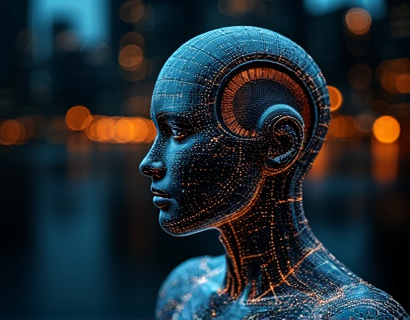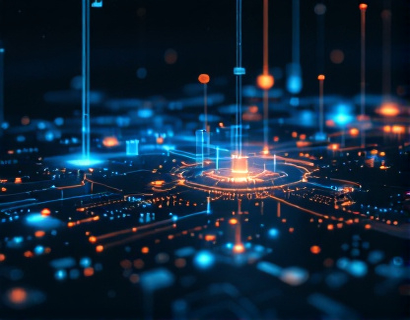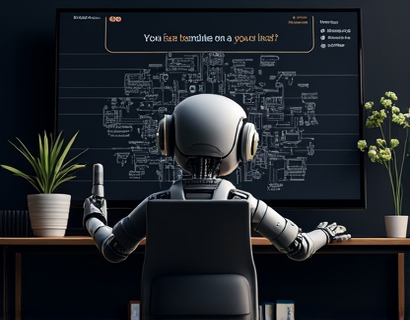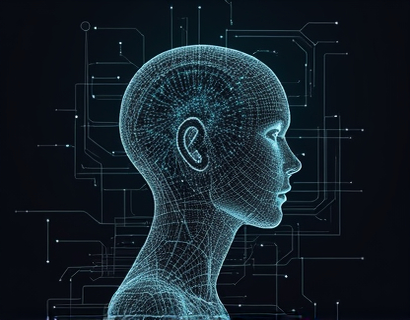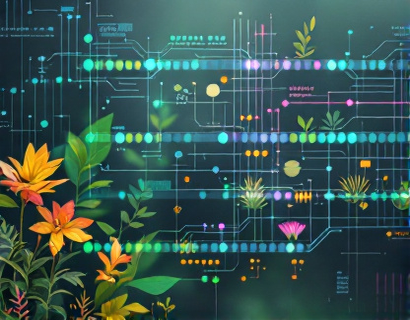Unlocking Seamless Global Communication with Advanced AI Translation Technology
In an increasingly interconnected world, the ability to communicate seamlessly across languages and cultures is more crucial than ever. Businesses and individuals alike face the challenge of breaking down language barriers to foster effective global interactions. The advent of cutting-edge AI translation technology offers a promising solution, providing precise and rapid translations that enhance business interactions and personal connections across diverse industries. This article delves into the transformative power of AI-powered translation tools, highlighting their capabilities and the profound impact they can have on global communication.
The Evolution of Translation Technology
The journey of translation technology has been marked by significant advancements, evolving from manual translation services to automated systems and now to AI-driven solutions. Early translation tools relied heavily on rule-based systems and dictionaries, which often resulted in inaccurate and contextually inappropriate translations. The introduction of statistical machine translation (SMT) marked a significant improvement, leveraging large datasets to predict the most likely translation. However, it was the emergence of neural machine translation (NMT) that revolutionized the field, offering more natural and contextually accurate translations.
NMT uses deep learning algorithms to understand the context and nuances of language, significantly reducing errors and improving fluency. These advancements have made AI translation technology more reliable and efficient, enabling real-time translations that can keep pace with human conversation. The integration of NMT in various platforms and devices has democratized access to high-quality translation services, making it possible for anyone with an internet connection to communicate across languages.
Precision and Efficiency in AI Translation
One of the most compelling advantages of AI translation technology is its precision and efficiency. Traditional translation methods often struggle with idiomatic expressions, colloquialisms, and domain-specific terminology, leading to misunderstandings and miscommunications. AI-powered translation systems, however, are trained on vast amounts of multilingual data, allowing them to grasp the subtleties of language and produce translations that are not only accurate but also contextually appropriate.
Efficiency is another key benefit. AI translation tools can process and translate large volumes of text almost instantaneously, saving time and resources. This is particularly valuable in business settings where timely communication can be critical. For instance, a multinational corporation can use AI translation to quickly translate important documents, emails, and meeting transcripts, ensuring that all stakeholders are on the same page regardless of their native language.
Enhancing Business Interactions Across Industries
The impact of AI translation technology extends across various industries, each with its unique communication challenges. In the business sector, effective communication is essential for successful negotiations, strategic partnerships, and global market expansion. AI translation tools facilitate these processes by providing real-time translations during meetings, conferences, and negotiations, ensuring that all parties understand each other clearly and accurately.
In the healthcare industry, precise communication is vital for patient care and safety. AI translation tools can assist medical professionals in understanding patient histories, symptoms, and treatment plans, even when language barriers exist. This not only improves the quality of care but also enhances patient satisfaction and trust.
The legal field is another area where accurate translation is crucial. Contracts, legal documents, and court proceedings require precise language to avoid misinterpretations that could have serious consequences. AI translation tools can help legal professionals translate complex documents quickly and accurately, ensuring that all parties have a clear understanding of the legal terms and conditions.
Personal Connections and Cultural Exchange
Beyond the professional realm, AI translation technology fosters personal connections and cultural exchange. Travelers can use translation apps to communicate with locals, read signs and menus, and navigate unfamiliar environments with ease. This not only enhances the travel experience but also promotes cross-cultural understanding and appreciation.
Language learning is another area where AI translation tools can be incredibly beneficial. Learners can use these tools to practice their language skills, receive instant feedback on their translations, and gain insights into the nuances of a new language. This interactive approach to language learning makes the process more engaging and effective.
Challenges and Limitations
Despite its numerous advantages, AI translation technology is not without challenges and limitations. One of the primary concerns is the accuracy of translations, especially for low-resource languages with limited training data. While NMT has made significant strides, certain languages and dialects may still face translation gaps. Additionally, AI translation tools may struggle with highly specialized or technical content, where precise terminology is essential.
Another challenge is the preservation of tone and style in translations. Humor, sarcasm, and emotional nuances can be difficult for AI systems to capture, potentially leading to misinterpretations. To address these issues, ongoing research and development are necessary to improve the algorithms and expand the training datasets.
Future Prospects and Innovations
The future of AI translation technology holds exciting possibilities. As machine learning models continue to advance, we can expect even more accurate and context-aware translations. The integration of natural language processing (NLP) with other AI technologies, such as sentiment analysis and conversational AI, will further enhance the capabilities of translation tools.
Moreover, the development of multilingual models that can handle multiple languages simultaneously is on the horizon. These models will not only improve translation quality but also streamline the translation process, making it more accessible and user-friendly. The potential for real-time, seamless communication across all languages is within reach, paving the way for a truly globalized world.
Conclusion
AI translation technology represents a significant leap forward in breaking down language barriers and enhancing global communication. Its precision, efficiency, and versatility make it an invaluable tool for businesses and individuals seeking to connect across cultures and languages. As the technology continues to evolve, we can anticipate even more innovative solutions that will further bridge the gap between diverse communities. Embracing AI translation is not just about overcoming language challenges; it's about fostering understanding, collaboration, and mutual respect in an increasingly interconnected world.




